Discovering the Ketogenic Diet: An Introduction to Fat-Based Fuel
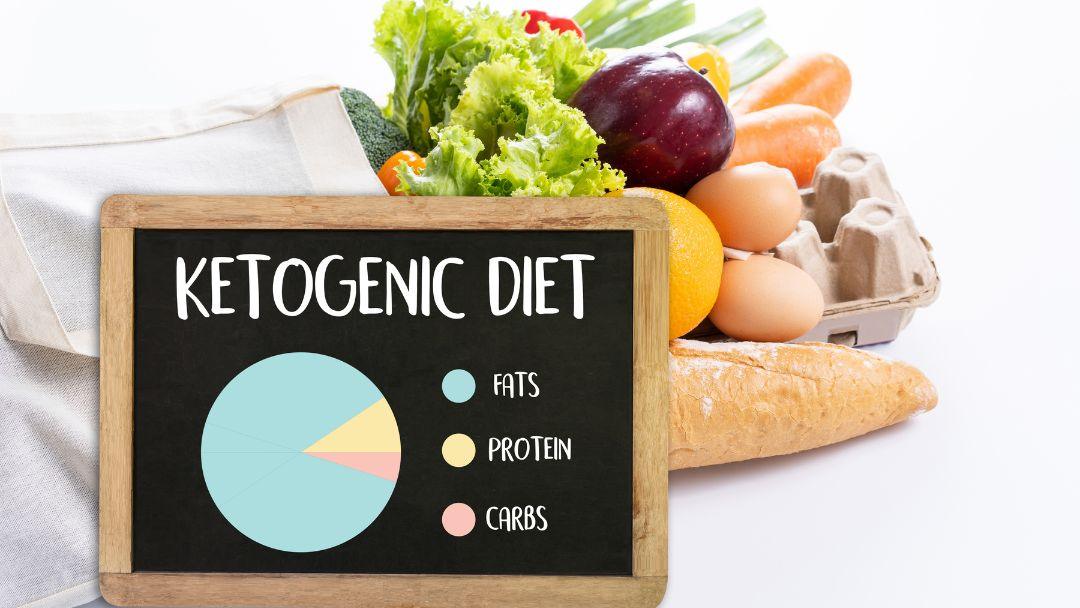
Discovering the Ketogenic Diet: An Introduction to Fat-Based Fuel
Are you brand new to the ketogenic diet scene? If so, you are not by yourself. More people need to be aware of this distinct method of diet and its possible advantages. In this blog post, we'll go over the fundamentals of the standard ketogenic diet here, define essential concepts, and give an overview of how it functions.
Fat Metabolism on the Ketogenic Diet - Understanding Keto 101
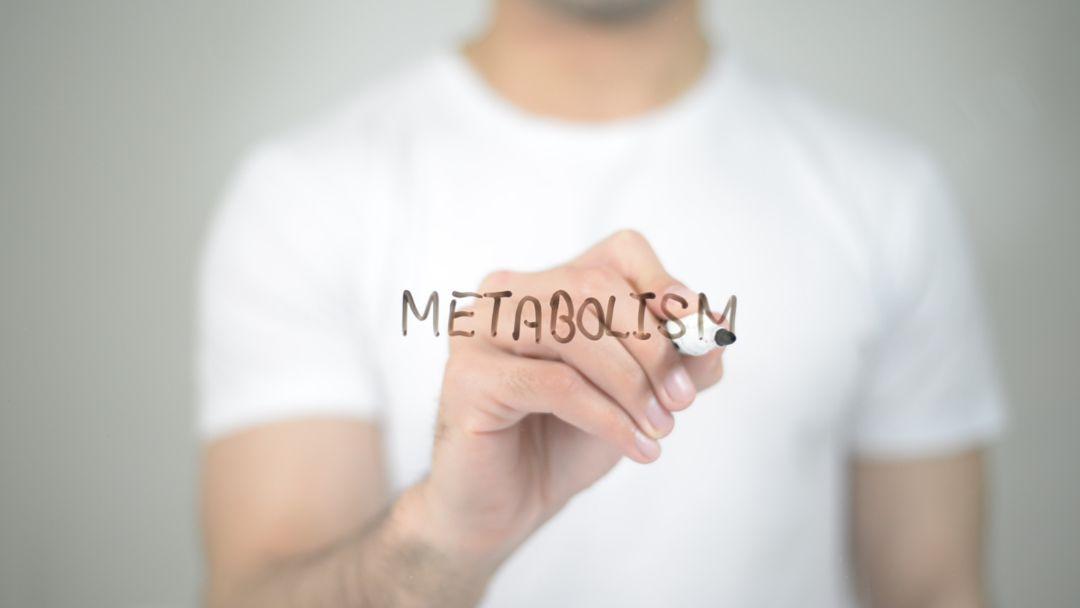
The main goal of a ketogenic diet is to switch the body's metabolism from using glucose (carbohydrates) as its primary fuel source to using fat instead. By limiting carbohydrate consumption below a predetermined threshold, usually about 100 grammes per day, the body goes through several adjustments. The amount of protein and fat consumed might vary based on personal objectives, but the absence or restriction of carbohydrates is the critical component of a keto diet.
Let's examine how the keto diet depends on proper fuel metabolism. Our bodies depend on carbs, protein, and fat for energy under typical nutritional circumstances. However, our meagre supplies quickly run out when carbs are in short supply. In this circumstance, the body looks for alternate fuel sources, and free fatty acids (FFA) are one of those alternatives. While most tissues can obtain their energy from FFA, specific organs, such as the brain and nervous system, need an alternate source of fuel termed ketone bodies.

Ketone Bodies are created when FFA are incompletely broken down in the liver. They provide several tissues, including the brain, with non-carbohydrate fuel. A metabolic condition called ketosis is reached as ketone bodies build up in the bloodstream. Protein is broken down for energy less frequently while a person is in a state of ketosis, conserving lean body mass. The ketogenic diet is popular among people who want to reduce body fat while preserving muscular mass.
World of Hormones on the Keto Diet
In particular, insulin and glucagon levels are impacted by the keto diet. A storing hormone called insulin, glucagon mobilises glycogen from the body's fat reserves to produce glucose for the body's needs. In response to carbohydrate restriction, insulin levels fall, and glucagon levels rise. This hormonal change causes the liver to release and burn FFA more often, which in turn causes the creation of ketone bodies and the metabolic state of ketosis. The body's use of carbs as fuel is shifted away from other hormones, which are similarly impacted.

Help! Can I Exercise on the Keto Diet?
What about a ketogenic diet and exercise? Any diet intended to help people lose fat, including the ketogenic diet, must include physical exercise to be effective. Low-intensity activity can still be done on a diet low in carbs, while high-intensity exercise may not be supported.
The targeted ketogenic diet (TKD) and the cyclical ketogenic diet (CKD) are two modified ketogenic diets that are frequently used to address this problem. The TKD enables deliberate carbohydrate intake before and after exercise to maintain performance without interfering with ketosis. While restoring muscle glycogen and enhancing exercise performance, the CKD alternates periods of keto diets with periods of high-carbohydrate consumption.
Unveiling the Rise and Fall of Ketogenic Diets in Bodybuilding
In the early years of bodybuilding, a peculiar diet known as the "fish and water diet" gained popularity among fitness enthusiasts. This lown carbohydrate approach, aimed at reducing body fat, captured the attention of athletes striving for a lean physique. However, as the focus shifted towards carbohydrate based diets, the adoption of low carb and ketogenic diets waned among athletes.

But just as trends come and go, the keto diet experienced a resurgence in the 1990's, particularly in the realm of bodybuilding. Modified versions of the keto diet were devised to cater specifically to the needs of athletes, especially bodybuilders. One such adaptation was the introduction of cyclical keto diets (CKDs), exemplified by "The Anabolic Diet" and "Bodyopus."
The origins of CKDs can be traced back to the 1980s, when Michael Zumpano and Daniel Duchaine formulated "The Rebound Diet" for muscle building and a modified version called "The Ultimate Diet" for fat loss. Although these early CKDs were not well-received within the bodybuilding community, they laid the foundation for further exploration.
In the early 1990's, Dr. Mauro DiPasquale, a renowned authority on drug use in sports, introduced "The Anabolic Diet" (AD). This approach alternated periods of 1 - 2 days of unlimited carbohydrate consumption with 5 - 6 days of low carb, moderate protein intake, and moderate to high fat eating. The key premise of the Anabolic Diet was to induce a "metabolic shift," compelling the body to rely on fat for fuel during the low-carb phase. The weekend carb loading period aimed to replenish muscle glycogen stores and promote muscle growth, as weight training on a keto diet alone is not feasible.
DiPasquale claimed that his diet was highly anabolic, fostering muscle building processes, while also being anti catabolic, preventing muscle breakdown. However, his book drew criticism for its lack of relevant references and flawed conclusions, as it predominantly relied on animal studies instead of human research when ample human studies were available.
Despite the controversies surrounding the Anabolic Diet and other CKDs, they played a significant role in the resurgence of the keto diet in the world of bodybuilding. These approaches challenged the traditional notions of nutrition, with their emphasis on high fat consumption contradicting the recommendations of many nutritionists at the time.
As with any dietary trend, the popularity of keto diets in bodybuilding has waxed and waned over time. Yet, the ongoing evolution of nutritional science continues to shed light on the potential benefits and limitations of these approaches. By staying informed and critically evaluating the available research, athletes and fitness enthusiasts can make informed decisions regarding their dietary strategies for optimal performance and physique transformation.

What do I Need to Understand?
A fascinating method of eating called a keto diet encourages the body to use fat as its main fuel and source of energy. You can start your ketogenic adventure with knowledge and assurance if you comprehend the basics of fuel metabolism, hormonal control, and the function of exercise. Watch this space for additional articles on the application of the keto diet, including meal preparation, recipes, and success strategies.
Unlocking the Power of Fasting and Ketogenic Diets: Exploring the Metabolic Connection
Have you ever wondered about the intriguing link between fasting and ketogenic diets? While we won't delve into all the technicalities here, we must grasp the fundamental similarity between these two metabolic states.
Fasting, characterised by complete abstinence from food intake, and the ketogenic diet share remarkable metabolic parallels. These resemblances have played a significant role in the evolution of the keto diet over time. The essence of the keto diet lies in its attempt to replicate the metabolic effects of fasting while still allowing for food consumption.
Let's look at the fascinating connection between fasting and the keto diet. Although "starvation ketosis" and "dietary ketosis" are occasionally used to describe these respective metabolic states, we'll keep things simple and focus on their fundamental similarities. Both fasting and the ketogenic diet trigger a metabolic switch in your body, shifting its primary energy source from glucose (carbohydrates) to fat.
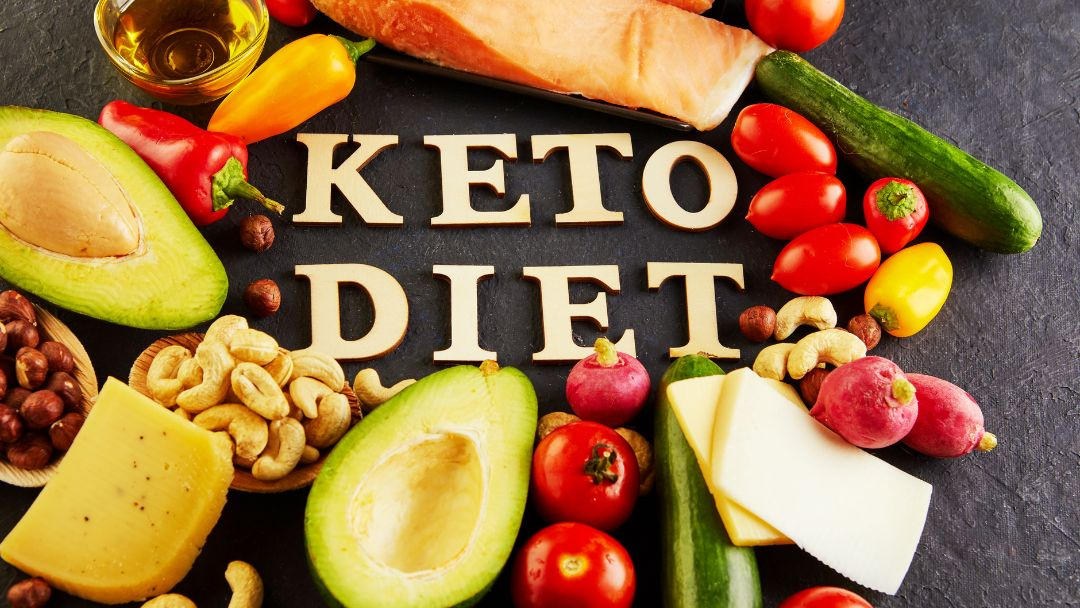
During fasting, when you abstain from food for an extended period, your body exhausts its stored glucose reserves. As a result, it begins to break down stored fat into free fatty acids (FFA), which are then converted into ketone bodies. These ketone bodies are an alternative fuel source for various tissues, including the brain, enabling them to sustain energy requirements.
The ketogenic diet takes a similar approach but allows for food consumption. By utilising a low carb intake and increasing fat consumption, the diet prompts your body to enter a state of ketosis. As carbohydrates become limited, your body taps into fat stores, breaking them into FFA. Just like during fasting, these FFA are converted into ketone bodies to fuel your body's energy needs.
So, why mimic the effects of fasting through the ketogenic diet? The answer lies in the remarkable benefits associated high fat diet along with ketosis. By adopting a ketogenic lifestyle, you can reap the rewards of improved weight management, increased mental clarity, enhanced energy levels, and more stable blood sugar and blood pressure levels. It's like experiencing the metabolic advantages of fasting while enjoying food nourishment.

While fasting may not be suitable for everyone or sustainable long-term, the ketogenic diet offers a practical and viable alternative. It allows you to embrace the potential health benefits of ketosis while nourishing your body with a well-formulated diet. Proper planning and guidance will enable you to embark on a ketogenic journey that aligns with your goals and preferences.
The Keto Diet: Unlocking the Power of Fat Based Fuel for Childhood Epilepsy
One of the most well known clinical applications of the ketogenic diet is its use in treating childhood epilepsy. The use of fasting to alleviate seizures dates back to ancient times, but it wasn't until the early 1900's that total fasting was employed to treat seizures in children. While fasting showed promising results, it was not a sustainable long term solution. This led nutrition researchers to explore alternative methods to mimic the effects of starvation ketosis while still allowing for food consumption. In 1921, Dr. Wilder developed the first ketogenic diet for epilepsy, which proved to be a game changer for children whose seizures were unresponsive to medications and other therapies.

The ketogenic diet for epilepsy is a high fat, low carbohydrate, and adequately low protein diet that sustains a state of ketosis similar to fasting. By restricting carbohydrates and providing ample amounts of fat, the body switches its primary fuel source from glucose to ketones, resulting in improved seizure control for many children. The diet used in 1998 for treating childhood epilepsy remains virtually unchanged from Dr. Wilder's original ketogenic diet.
During the 1930's, 1940's, and 1950's, as new epilepsy medications were developed, the standard ketogenic diet fell out of favor. The challenges of maintaining the restrictive diet, coupled with the availability of medications, led to its decline. However, a few modified keto diets, such as the Medium Chain Triglyceride (MCT) diet, were explored to offer more food variety. Despite these efforts, the classic ketogenic diet used for epilepsy remained relatively unpopular.
The ketogenic diet has had a profound impact on the treatment of childhood epilepsy. From its origins in fasting to the development of Dr. Wilder's ketogenic diet, this approach has provided relief for many children whose seizures were unresponsive to traditional treatments.
Although the diet faced a decline with the advent of new medications, its effectiveness and potential for seizure control have persisted throughout the years. As we continue to explore the therapeutic applications of the ketogenic diet, it is important to recognise its historical significance and ongoing relevance in managing childhood epilepsy. By understanding the power of fat based fuel and its impact on seizure control, we can provide hope and support to those affected by this challenging condition.
The ketogenic diet has gained significant attention for its potential therapeutic applications beyond epilepsy. While epilepsy remains one of the most well known conditions treated with a ketogenic diet, emerging research suggests that this dietary approach may also have clinical benefits for other medical conditions.
One area of interest is the potential use of the ketogenic diet in managing head trauma. Preliminary studies indicate that the ketogenic diet's ability to provide an alternative fuel source to the brain, in the form of ketones, may support neuroprotection and aid in the recovery process following traumatic brain injury. However, further research is needed to fully understand the extent of its effectiveness and optimal implementation.
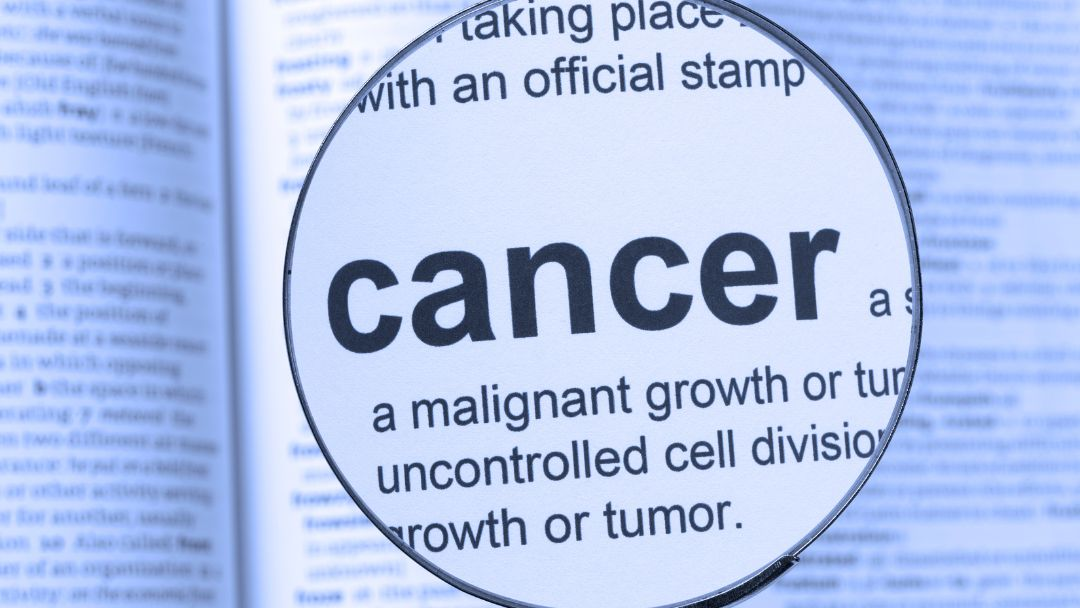
Additionally, the keto diet shows promise in certain types of pediatric cancer. Some research suggests that cancer cells have a diminished ability to utilise ketones as an energy source compared to normal cells. By restricting carb intake and promoting ketosis, the ketogenic diet may potentially limit the growth and proliferation of cancer cells. However, it is crucial to note that the ketogenic diet should always be used in conjunction with standard cancer treatments and under the guidance of a healthcare professional.
Respiratory failure is another condition that has shown potential benefits from the ketogenic diet. Studies have suggested that a keto diet may enhance respiratory muscle strength and improve lung function, particularly in individuals with chronic obstructive pulmonary disease (COPD) or other respiratory disorders. However, more research is necessary to establish the specific mechanisms and effectiveness of the ketogenic diet in respiratory failure management.
While this blog primarily focuses on the use of the ketogenic diet for fat loss and weight management, it is important to acknowledge the expanding body of research exploring its potential therapeutic applications. For those interested in delving deeper into the scientific studies supporting the use of the keto diet for specific medical conditions, it is recommended to consult the references provided or seek additional resources dedicated to those topics.
It's crucial to highlight that while the keto diet shows promise in these areas, it should always be approached with caution and under the supervision of healthcare professionals. Each individual's medical condition is unique, and a personalised approach is necessary to determine the appropriate implementation and monitor the potential benefits and risks associated with the keto diet.
As research continues to evolve, it is essential for individuals considering the keto diet for therapeutic purposes to consult with their healthcare providers, who can provide expert guidance, tailor the diet to their specific needs, and ensure comprehensive care and monitoring throughout the process.
The Powerful Impact of Ketogenic Diets for Weight Loss and Overall Health
For over a century, the keto diet has been used as a method to achieve weight loss goals and has occasionally gained popularity in mainstream dieting. The concept of complete starvation and its effects on the body has been extensively researched, leading to intriguing findings that have shaped our understanding of keto diets and their benefits. Here, we will explore the fascinating history and science behind the keto diet, shedding light on how they can help individuals lose weight effectively and improve their overall well-being.

The Influence of Starvation and Ketosis
Pioneering studies, such as Hill's remarkable investigation, have significantly contributed to our understanding of the effects of complete starvation on the human body. Hill conducted a groundbreaking 60 day fasting experiment to observe the outcomes. This research showed that quick weight and fat loss could be achieved through starvation, making it an initial attraction for the treatment of severe obesity. Moreover, the hunger suppression and enhanced sense of well-being associated with ketosis further bolstered the appeal of fasting as a weight loss strategy.
Incredible Testimonies of Prolonged Fasting
In the pursuit of drastic weight loss, some extremely obese individuals have undertaken fasting regimens lasting up to a year, consuming only water, vitamins, and minerals. While complete starvation can indeed result in significant body protein loss, particularly from muscle tissue, this remains a concern in the context of sustained fasting. However, it is important to note that protein losses decrease as the famine progresses. Nevertheless, the fact that up to half of the total weight lost during prolonged fasting comprises muscle and water is a drawback that must be considered.

The Rise of Ketogenic Diets
As a response to the challenges posed by complete fasting, the concept of the keto diet has emerged as a viable alternative. The keto diet is characterised by low carbohydrate intake, moderate protein consumption, and high fat intake. By limiting carbohydrates, the body is forced to enter a state of ketosis, where it relies primarily on fat as its fuel source rather than glucose. This metabolic shift leads to efficient fat burning and weight loss while preserving muscle mass.
Exploring the Benefits Beyond Weight Loss
While keto diets have gained recognition for their remarkable weight loss effects, they offer a range of additional health benefits. Research suggests that ketogenic diets may positively impact blood pressure, blood sugar levels, LDL cholesterol, and body fat percentage.
Furthermore, they have shown potential in reducing the risk of cardiovascular disease and promoting better blood glucose control. By focusing on healthy, unsaturated fats and incorporating leafy greens and low carb vegetables, individuals can enjoy a balanced and nutritious ketogenic meal plan.

The Journey to a Healthy Lifestyle
Embracing a keto diet lifestyle goes beyond short term weight loss goals. It encourages individuals to adopt a sustainable and healthy approach to nutrition. With an emphasis on whole foods, healthy fats like olive oil, and adequate protein intake, individuals can optimise their body's ability to burn fat, improve overall well being, and reduce the risk of vitamin and mineral deficiencies.
However, it is essential to consult with a healthcare professional before embarking on any dietary changes, especially for those with specific health conditions or concerns.
The ketogenic diet offers a fascinating pathway to effective weight loss and improved health. Combining the power of ketosis, controlled carbohydrate intake, and healthy dietary choices, individuals can unlock their body's potential to burn fat and achieve their desired weight goals.
While keto diets have evolved from the research on complete fasting, they have become a practical and sustainable approach to weight loss and overall wellness. By embracing the lifestyle of following keto diets, individuals can embark on a journey towards a healthier and more fulfilling life.
Innovative Approaches to Weight Loss: Exploring the Protein Sparing Modified Fast and Low Carbohydrate Diet
In the early 1970s, a groundbreaking method of controlled starvation called the Protein Sparing Modified Fast (PSMF) was developed. Unlike traditional fasting, the PSMF focused on providing high quality protein in sufficient quantities to prevent significant muscle loss. This approach aimed to harness the benefits of ketosis, such as hunger suppression and the reliance on body fat and ketones for energy, while preserving muscle mass. Although the PSMF is still used today to address severe obesity, it is strictly supervised by medical professionals.
During this time, researchers discovered an interesting correlation between carbohydrate consumption and calorie reduction. Studies revealed that when carbohydrate consumption was restricted to 50 grams or less per day, individuals naturally consumed fewer calories, leading to weight and fat loss. This finding sparked a debate as to whether the effectiveness of keto diets was primarily due to calorie reduction or had unique metabolic effects.
In the early 1970's, the publication of "Dr. Atkins Diet Revolution" played a significant role in popularising the keto diet as a solution for weight loss. Dr. Atkins advocated for a carbohydrate restricted diet that allowed unlimited protein and fat intake. In contrast to previous semi starvation diets, this approach promised rapid and effortless weight loss without feelings of hunger. The book garnered widespread attention and both positive and negative opinions about the ketogenic diet.

Critics questioned the scientific basis of Dr. Atkins' claims, citing concerns about the methodology of the studies he referenced. However, the book's popularity sparked a renewed interest in the keto diet as a potential long term eating plan for sustainable weight loss. Dr. Atkins provided evidence to support his claims, although the scientific community continued to scrutinise the validity of his arguments.
The Protein Sparing Modified Fast and low-carbohydrate diets represent innovative approaches to weight loss that have gained traction over the years. By incorporating principles of controlled starvation and carbohydrate restriction, these methods aim to optimise fat burning while preserving muscle mass. However, it is important to note that before embarking on any dietary changes, seeking guidance from healthcare professionals is crucial to ensure safety and personalized recommendations.
As research and understanding of keto diets continue to evolve, we gain valuable insights into effective strategies for weight management and overall well being. By exploring the fascinating world of nutrition, we can make informed choices that align with our goals for a healthier lifestyle.
Navigating the Keto Journey - Overcoming Challenges and Maximising Success
Embarking on a keto diet is an exciting and transformative journey towards improved health and vitality. However, like any lifestyle change, it comes with its own set of challenges. In this article, we will explore some common obstacles that keto enthusiasts face and provide strategies to overcome them, allowing you to maximize your success on the ketogenic path.
Understanding the Keto Flu: Alleviating Discomfort and Staying on Track
One of the initial challenges when starting a keto diet is the infamous "keto flu." This temporary condition can manifest as fatigue, headaches, irritability, and brain fog as your body adjusts to using fat as its primary fuel source. Fortunately, there are strategies to alleviate these symptoms and stay on track:

-
Stay hydrated: Increasing water intake and replenishing electrolytes can help combat the dehydration often associated with the keto flu. Consider adding mineral-rich sources like low-sodium broth or electrolyte supplements to your routine.
-
Incorporate healthy fats: Embracing a high-fat diet is crucial for achieving ketosis, but focus on consuming healthy fats like avocados, nuts, and olive oil. These provide essential nutrients while supporting your body's transition into a ketogenic state.
Celebrating Rapid Weight Loss Safely
The keto diet is renowned for its ability to promote rapid weight loss. While this can be exciting, it's important to maintain a healthy approach throughout your keto meals journey:
-
Set realistic goals: While quick weight loss can occur in the initial stages, it may slow down over time. Embrace sustainable progress and celebrate milestones along the way, understanding that everyone's weight loss journey is unique.
-
Focus on overall health: Remember that weight loss is just one aspect of the keto diet. Concentrate on improving your overall well-being, such as managing blood pressure and blood sugar levels, as these are essential markers of success.
Balancing Carb Intake for Sustained Ketosis
Finding the optimal balance of carbohydrate intake is crucial to maintaining a state of ketosis. Here's how you can achieve it:
-
Track net carbs: Net carbs are calculated by subtracting fiber from total carbs, representing the carbohydrates that impact blood sugar levels. Monitoring net carb intake helps ensure you stay within the desired range for ketosis.
-
Embrace low-carb foods: Explore the abundance of low-carb options available, such as leafy greens, cruciferous vegetables, and low-sugar fruits. These nutrient-rich choices support ketosis while providing essential vitamins and minerals.
Protein Considerations and Avoiding Pitfalls
While protein is an essential macronutrient, excessive consumption can hinder ketosis and potentially lead to weight loss plateaus. Here's how to navigate protein on a keto diet:
-
Average protein intake: Determine your protein needs based on factors such as activity level, body weight, and goals. Aim for a moderate amount to support muscle maintenance and avoid excess gluconeogenesis, where protein converts to glucose.
-
Choose protein-rich foods wisely: Opt for lean sources of protein like poultry, fish, and tofu. Incorporate healthy fats alongside protein to promote satiety and balance your macronutrient ratios effectively.
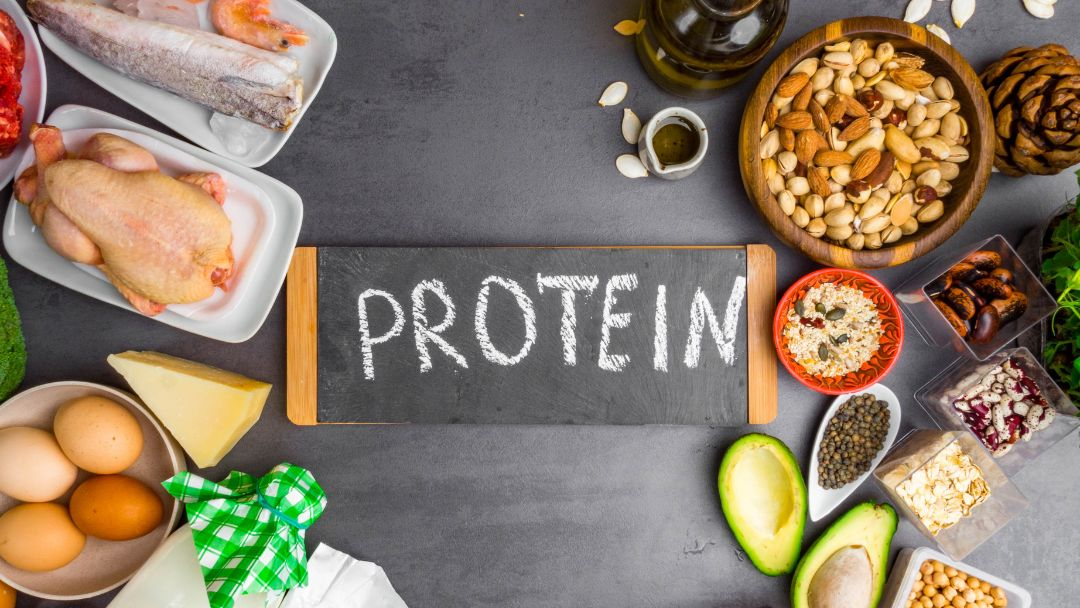
Identifying and Addressing Keto Flu Symptoms
As your body adapts to a ketogenic lifestyle, it's essential to recognize signs of electrolyte imbalances and address them promptly:
-
Monitor electrolyte levels: Electrolytes such as sodium, potassium, and magnesium play crucial roles in maintaining proper bodily function. Consider supplementing with electrolytes or consuming electrolyte-rich foods to prevent imbalances.
-
Stay vigilant: Be mindful of symptoms like muscle cramps, fatigue, or irregular heart rhythms, as these can indicate an electrolyte deficiency. If symptoms persist or worsen, consult a healthcare professional for guidance.
By overcoming these challenges and staying committed to your keto journey, you can unlock the many benefits of the ketogenic diet, including improved blood sugar control, reduced body weight, and enhanced overall health. Remember to prioritize nutrient-dense, low-carb vegetables, incorporate healthy fats like olive oil and nuts, and maintain a balanced approach to protein intake. With perseverance and the right strategies, you'll navigate the keto journey successfully and reap the rewards of a vibrant, fat-burning metabolic state.
Crafting Delicious Keto Meals
Contrary to popular belief, the ketogenic diet is far from boring or restrictive. With an abundance of creative recipes and meal ideas available, you can enjoy a diverse range of flavorful dishes while staying within your low carb parameters. From satisfying salads to mouthwatering meat and vegetable combinations, the possibilities are endless. Explore the world of keto-friendly ingredients, including low carb veggies, nuts, seeds, and high-quality proteins. Experiment with medium chain triglyceride (MCT) oils to boost your fat intake and support ketone production.
Low Carb Diet Dinner Ideas!

Lemon Garlic Salmon with Roasted Asparagus
Ingredients:
-
4 salmon fillets
-
1 bunch of asparagus
-
2 tablespoons olive oil
-
2 cloves of garlic, minced
-
Juice of 1 lemon
-
Salt and pepper to taste
Instructions:
-
Preheat the oven to 400°F (200°C).
-
Place the salmon fillets on a baking sheet lined with parchment paper.
-
In a small bowl, mix together minced garlic, lemon juice, and olive oil. Drizzle the mixture over the salmon fillets.
-
Season with salt and pepper.
-
Trim the ends of the asparagus and place them on the same baking sheet as the salmon. Drizzle with olive oil and season with salt and pepper.
-
Bake for 12-15 minutes until the salmon is cooked through and the asparagus is tender.

Grilled Chicken Caesar Salad
Ingredients:
-
2 boneless, skinless chicken breasts
-
4 cups romaine lettuce, chopped
-
2 tablespoons grated Parmesan cheese
-
2 tablespoons Caesar dressing (choose a low carb option)
-
Salt and pepper to taste
Instructions:
-
Season the chicken breasts with salt and pepper.
-
Preheat the grill to medium-high heat.
-
Grill the chicken for about 6-8 minutes per side until cooked through.
-
Let the chicken rest for a few minutes, then slice it into strips.
-
In a large bowl, combine the romaine lettuce, grated Parmesan cheese, and Caesar dressing. Toss well to coat.
-
Top the salad with the grilled chicken strips and serve.

Beef Stir-Fry with Broccoli and Mushrooms
Ingredients:
-
1 pound beef sirloin, thinly sliced
-
2 cups broccoli florets
-
1 cup sliced mushrooms
-
2 tablespoons coconut oil
-
2 cloves of garlic, minced
-
2 tablespoons soy sauce (choose a low carb option)
-
Salt and pepper to taste
Instructions:
-
Heat the coconut oil in a large skillet or wok over medium-high heat.
-
Add the minced garlic and cook for 1 minute until fragrant.
-
Add the beef slices and stir-fry until browned.
-
Add the broccoli florets and sliced mushrooms to the skillet and continue to stir-fry for 3-4 minutes until the vegetables are tender-crisp.
-
Stir in the soy sauce and season with salt and pepper to taste.
-
Cook for another 2 minutes, then remove from heat and serve.

Cauliflower Crust Pizza
Ingredients:
-
1 medium cauliflower head, grated or processed into fine crumbs
-
2 eggs
-
1 cup shredded mozzarella cheese
-
1 teaspoon dried oregano
-
1/2 teaspoon garlic powder
-
Your choice of low carb pizza toppings (e.g., pepperoni, bell peppers, onions, etc.)
-
Tomato sauce (choose a low carb option)
-
Salt and pepper to taste
Instructions:
-
Preheat the oven to 425°F (220°C).
-
Place the grated cauliflower in a microwave-safe bowl and microwave for 5 minutes.
-
Allow the cauliflower to cool, then transfer it to a clean kitchen towel. Squeeze out as much moisture as possible.
-
In a bowl, combine the cauliflower, eggs, shredded mozzarella cheese, dried oregano, garlic powder, salt, and pepper. Mix well.
-
Line a baking sheet with parchment paper and spread the cauliflower mixture into a thin crust shape.
-
Bake the crust in the oven for 15-20 minutes until golden brown.
-
Remove from the oven and add your choice of low carb pizza toppings. Return to the oven for an additional 5-10 minutes until the cheese is melted and bubbly.
-
Slice and serve.

Spinach and Feta Stuffed Chicken Breast
Ingredients:
-
4 boneless, skinless chicken breasts
-
1 cup fresh spinach leaves
-
1/2 cup crumbled feta cheese
-
2 tablespoons olive oil
-
2 cloves of garlic, minced
-
Salt and pepper to taste
Instructions:
-
Preheat the oven to 375°F (190°C).
-
Slice a pocket into each chicken breast by cutting horizontally through the side.
-
Stuff each pocket with spinach leaves and crumbled feta cheese.
-
In a small bowl, mix together minced garlic, olive oil, salt, and pepper.
-
Brush the garlic and oil mixture over the chicken breasts.
-
Place the stuffed chicken breasts on a baking sheet lined with parchment paper.
-
Bake for 25-30 minutes until the chicken is cooked through and no longer pink in the center.
-
Remove from the oven and let it rest for a few minutes before serving.

Shrimp Zucchini Noodles with Garlic Parmesan Sauce
Ingredients:
-
1 pound shrimp, peeled and deveined
-
3 medium zucchini, spiralized into noodles
-
3 tablespoons butter
-
4 cloves of garlic, minced
-
1/2 cup heavy cream
-
1/4 cup grated Parmesan cheese
-
Salt and pepper to taste
-
Fresh parsley for garnish
Instructions:
-
Heat a large skillet over medium heat and melt the butter.
-
Add the minced garlic and sauté for 1-2 minutes until fragrant.
-
Add the shrimp to the skillet and cook until pink and cooked through, about 2-3 minutes per side. Remove the shrimp from the skillet and set aside.
-
In the same skillet, add the zucchini noodles and sauté for 2-3 minutes until slightly softened.
-
Pour in the heavy cream and grated Parmesan cheese. Stir well to combine and simmer for 2-3 minutes until the sauce thickens.
-
Return the cooked shrimp to the skillet and toss with the zucchini noodles and sauce.
-
Season with salt and pepper to taste.
-
Garnish with fresh parsley and serve.

Greek-style Chicken Skewers with Tzatziki Sauce
Ingredients:
-
1.5 pounds chicken breast, cut into chunks
-
2 tablespoons olive oil
-
2 cloves of garlic, minced
-
1 tablespoon dried oregano
-
Juice of 1 lemon
-
Salt and pepper to taste
-
1/2 cup plain Greek yogurt
-
1/4 cup grated cucumber
-
1 tablespoon fresh dill, chopped
-
1 tablespoon fresh lemon juice
-
Salt and pepper to taste
Instructions:
-
In a bowl, combine the olive oil, minced garlic, dried oregano, lemon juice, salt, and pepper. Mix well.
-
Add the chicken chunks to the bowl and toss to coat them in the marinade. Let it marinate for at least 30 minutes.
-
Preheat the grill or grill pan over medium-high heat.
-
Thread the marinated chicken chunks onto skewers.
-
Grill the chicken skewers for about 6-8 minutes per side until cooked through.
-
While the chicken is grilling, prepare the tzatziki sauce by combining the Greek yogurt, grated cucumber, fresh dill, lemon juice, salt, and pepper in a bowl. Mix well.
-
Serve the grilled chicken skewers with the tzatziki sauce on the side.
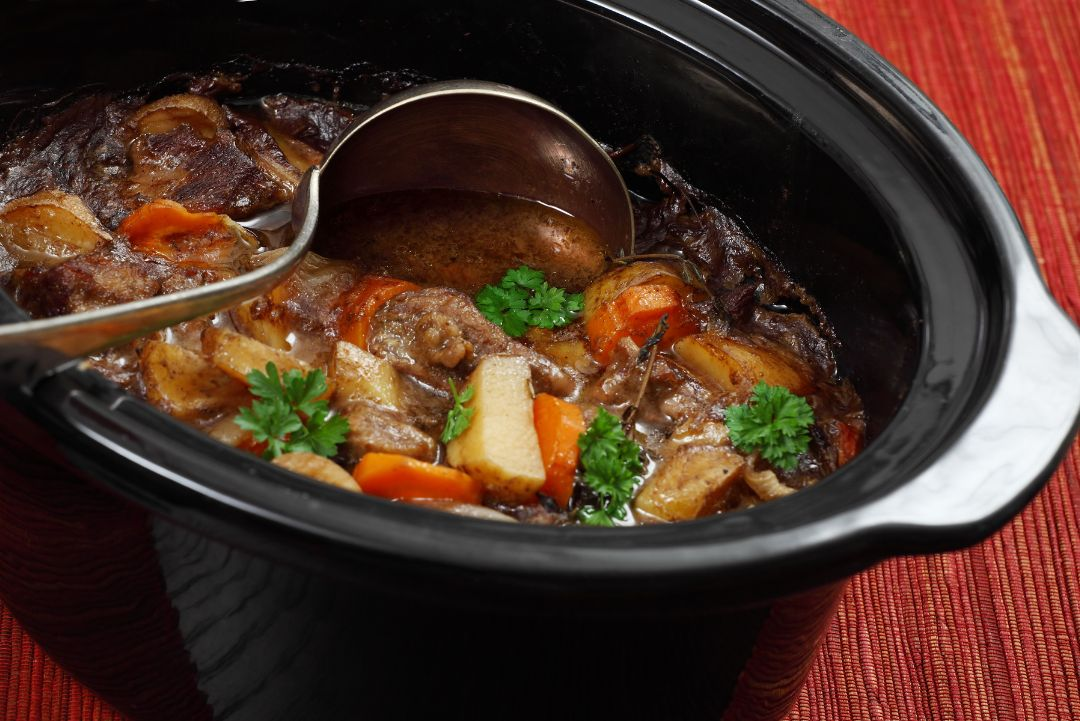
Slow-Cooked Keto Pot Roast
Ingredients:
-
2 pounds beef chuck roast
-
1 tablespoon olive oil
-
1 onion, sliced
-
4 cloves of garlic, minced
-
1 cup beef broth
-
1/4 cup tomato paste
-
2 teaspoons dried rosemary
-
2 teaspoons dried thyme
-
Salt and pepper to taste
-
2 cups low-carb vegetables (such as carrots, celery, and mushrooms), chopped
-
Fresh parsley for garnish (optional)
Instructions:
-
Heat the olive oil in a skillet over medium-high heat.
-
Season the beef chuck roast with salt and pepper on all sides.
-
Sear the roast in the skillet for a few minutes on each side until browned. Remove from the skillet and set aside.
-
In the same skillet, add the sliced onion and minced garlic. Sauté for 2-3 minutes until fragrant and slightly softened.
-
Add the beef broth, tomato paste, dried rosemary, and dried thyme to the skillet. Stir well to combine.
-
Transfer the seared roast and the onion mixture to a slow cooker.
-
Add the chopped low-carb vegetables to the slow cooker, spreading them around the roast.
-
Cover the slow cooker and cook on low heat for 8-10 hours or on high heat for 4-6 hours, until the beef is tender and easily falls apart.
-
Once cooked, remove the roast from the slow cooker and shred it using two forks.
-
Serve the shredded pot roast with the cooked vegetables and spoon some of the cooking juices over the top.
-
Garnish with fresh parsley, if desired, and enjoy!
Enjoy these delicious and keto-friendly dinner recipes that will nourish your body while keeping you on track with your low carb, high fat lifestyle.

